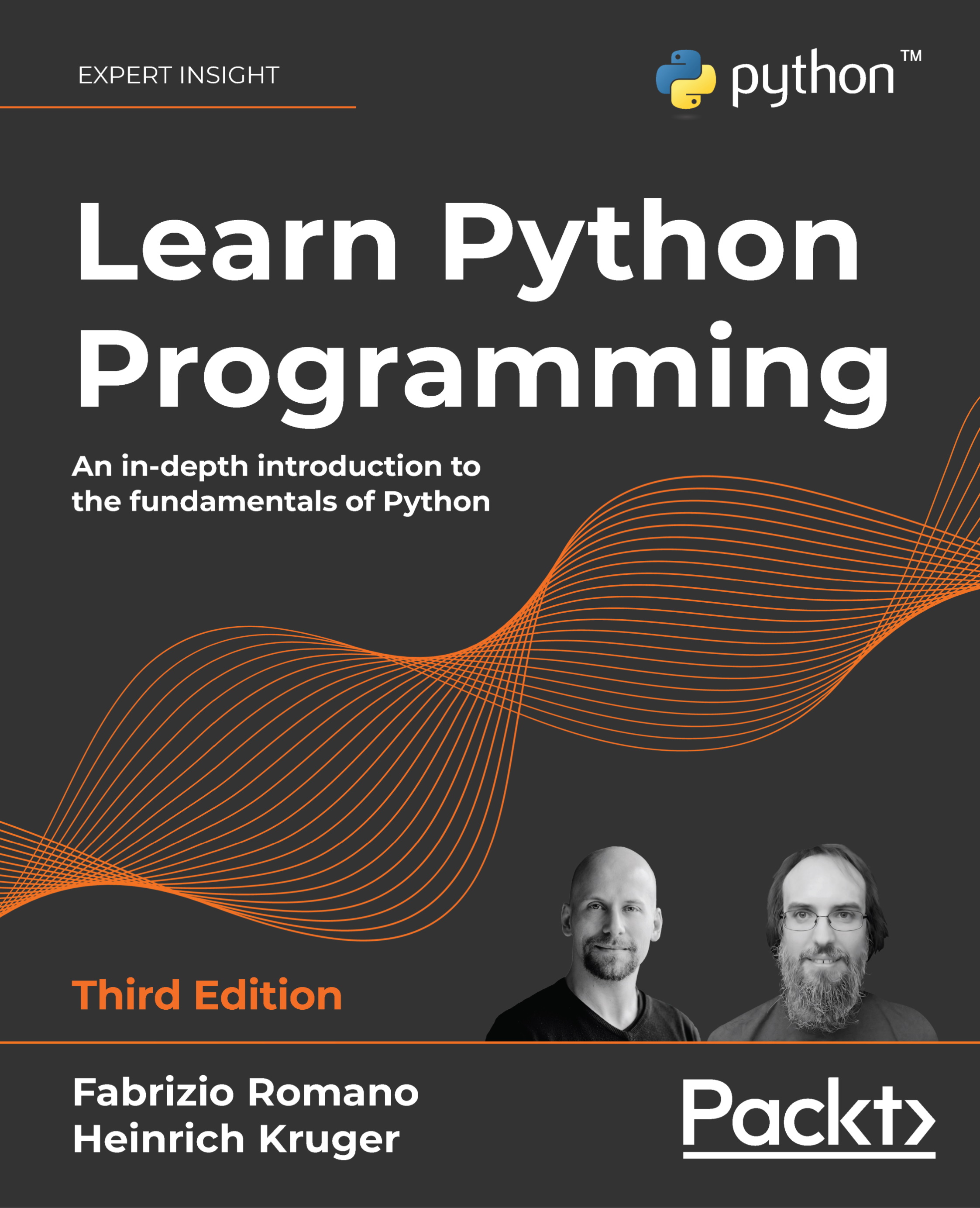Python also provides two set types, set and frozenset. The set type is mutable, while frozenset is immutable. They are unordered collections of immutable objects. Hashability is a characteristic that allows an object to be used as a set member as well as a key for a dictionary, as we'll see very soon.
From the official documentation (https://docs.python.org/3.9/glossary.html): "An object is hashable if it has a hash value which never changes during its lifetime, and can be compared to other objects. […] Hashability makes an object usable as a dictionary key and a set member, because these data structures use the hash value internally. Most of Python's immutable built-in objects are hashable; mutable containers (such as lists or dictionaries) are not; immutable containers (such as tuples and frozensets) are only hashable if their elements are hashable. Objects which are instances of user-defined classes are hashable by default. They all compare unequal (except with themselves), and their hash value is derived from their id()."
Objects that compare equally must have the same hash value. Sets are very commonly used to test for membership; let's introduce the in operator in the following example:
>>> small_primes = set()
>>> small_primes.add(2)
>>> small_primes.add(3)
>>> small_primes.add(5)
>>> small_primes
{2, 3, 5}
>>> small_primes.add(1)
>>> small_primes
{1, 2, 3, 5}
>>> small_primes.remove(1)
>>> 3 in small_primes
True
>>> 4 in small_primes
False
>>> 4 not in small_primes
True
>>> small_primes.add(3)
>>> small_primes
{2, 3, 5} # no change, duplication is not allowed
>>> bigger_primes = set([5, 7, 11, 13])
>>> small_primes | bigger_primes
{2, 3, 5, 7, 11, 13}
>>> small_primes & bigger_primes
{5}
>>> small_primes - bigger_primes
{2, 3}
In the preceding code, you can see two different ways to create a set. One creates an empty set and then adds elements one at a time. The other creates the set using a list of numbers as an argument to the constructor, which does all the work for us. Of course, you can create a set from a list or tuple (or any iterable) and then you can add and remove members from the set as you please.
We'll look at iterable objects and iteration in the next chapter. For now, just know that iterable objects are objects you can iterate on in a direction.
Another way of creating a set is by simply using the curly braces notation, like this:
>>> small_primes = {2, 3, 5, 5, 3}
>>> small_primes
{2, 3, 5}
Notice we added some duplication to emphasize that the resulting set won't have any. Let's see an example using the immutable counterpart of the set type, frozenset:
>>> small_primes = frozenset([2, 3, 5, 7])
>>> bigger_primes = frozenset([5, 7, 11])
>>> small_primes.add(11)
Traceback (most recent call last):
File "<stdin>", line 1, in <module>
AttributeError: 'frozenset' object has no attribute 'add'
>>> small_primes.remove(2)
Traceback (most recent call last):
File "<stdin>", line 1, in <module>
AttributeError: 'frozenset' object has no attribute 'remove'
>>> small_primes & bigger_primes
frozenset({5, 7})
As you can see, frozenset objects are quite limited with respect to their mutable counterpart. They still prove very effective for membership test, union, intersection, and difference operations, and for performance reasons.



 Free Chapter
Free Chapter
